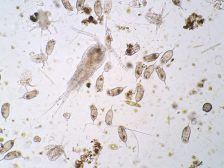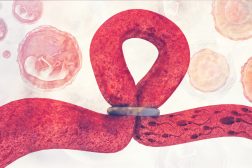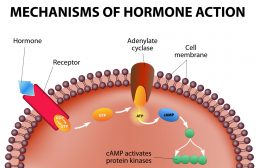prion
Origin: proteinaceous infectious particle
(microbiology) an infectious protein particle similar to a virus but lacking nucleic acid; thought to be the agent responsible for scrapie and other degenerative diseases of the nervous system.
The word, for proteinaceous infectious agent, was coined in 1982 by neurologist stanley Prusiner as part of a hypothesis regarding ailments bearing aetiologic resemblance to those caused by slow viruses (for instance, kuru). The hypothesis has been borne out by investigation. Prions are now believed responsible for several transmissible neurodegenerative diseases such as creutzfeldt-jakob disease (CJD), the human form of mad cow disease.
prions are infectious proteinaceous particles that lack nucleic acid. Prions are said to be in the border zone between nonliving and living things because they have no need to metabolize or the capacity to reproduce but they are capable of replication within the body of a human or of some mammals.
prions can gain entry into the body mainly by ingestion, e.g. of contaminated human Growth Hormone or of contaminated blood or blood products. Prions may also arise from a mutation in the gene that encodes the protein. They not only fold into unusual shapes but also seem to have the ability to cause other (normal) proteins to alter their shape as well.
Since in general the disease would show symptoms only after more than 30 years the prions have already accumulated and attacked nerve cells or brain tissues, leaving spongelike holes. Prion diseases have both infectious and hereditary components. The gene that codes for prions can mutate and be passed on to the next generation. Most of the diseases also can be acquired directly by infection, but unlike other infectious agents, prions provoke no immune response.
Dictionary > Prion
You will also like...

New Zealand’s Unique Geographical History
Explore why New Zealand has such unique flora and fauna, and learn why long periods of geographical isolation. This less..

Freshwater Communities & Plankton
Planktons are microscopic organisms that live suspended in aquatic habitats. There are two groups: the phytoplanktons an..

Neurology of Illusions
Illusions are the perceptions and sensory data obtained from situations in which human error prevents us from seeing the..

Birth Control and Contraception
Different pregnancy and birth control and contraception strategies are described. Read this tutorial to learn each of th..

Plant Cells vs. Animal Cells
Plant cells have plastids essential in photosynthesis. They also have an additional layer called cell wall on their cell..

Homeostatic Mechanisms and Cellular Communication
Homeostasis is the relatively stable conditions of the internal environment that result from compensatory regulatory res..

